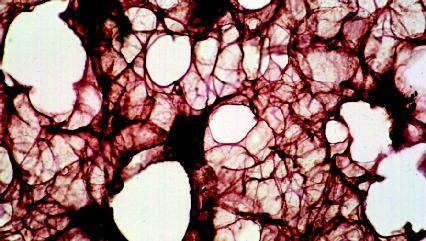This report has been published late in the Bush administration but may serve as a call to action for the Obama administration. Apparently the Bush administration overruled science to protect business practices that created health risks to workers. It apparently did so by undermining the work that is required of the Occupational Safety and Health Administration.
Here are a few excerpts from the article:
"In my 24 years at the Agency, I have never experienced such indecision and delay," Infante wrote in an e-mail to the agency's director of standards in March 2002. Eventually, top OSHA officials decided, over what Infante described in an e-mail to his boss as opposition from "the entire OSHA staff working on beryllium issues," to publish the bulletin with a footnote challenging a key recommendation the firm opposed.Comment: How important is it that a society protect the health and safety of its workers? I recall doing a study of health conditions in Bolivia where I was shocked to learn that the life expectancy of a teen-ager going to work in the tin mines was 12 years.
Current and former career officials at OSHA say that such sagas were a recurrent feature during the Bush administration, as political appointees ordered the withdrawal of dozens of workplace health regulations, slow-rolled others, and altered the reach of its warnings and rules in response to industry pressure.
The result is a legacy of unregulation common to several health-protection agencies under Bush: From 2001 to the end of 2007, OSHA officials issued 86 percent fewer rules or regulations termed economically significant by the Office of Management and Budget than their counterparts did during a similar period in President Bill Clinton's tenure, according to White House lists......
"The legacy of the Bush administration has been one of dismal inaction," said Robert Harrison, a professor at the University of California at San Francisco and chairman of the occupational health section of the American Public Health Association.......
More than two dozen current and former senior career officials further said in interviews that the agency's strategic choices were frequently made without input from its experienced hands. Political appointees "shut us out," a longtime senior career official said.........
The agency's first director under Bush, John L. Henshaw, startled career officials by telling them in an early meeting that employers were OSHA's real customers, not the nation's workers. "Everybody was pretty amazed," one of those present recalled. "Our purpose is to ensure employee safety and health."......
The agency's budget and its field staff declined during the Bush administration, even as its responsibilities -- and the total number of workers -- grew.
I have been reading Commonwealth of Thieves by Thomas Keneally, the story of the first settlement of Australia. One of the stories that it tells is of the second convoy carrying prisoners to the colony. The British government contracted with a firm in the slave trade to transport the convicts. It made the mistake of paying on the number of convicts embarked, and not on the number disembarked alive. The firm put the ships under captains who maximized profits in ways that allowed nearly 300 prisoners to die en route and requiring hospitalization of hundreds more on arrival. The end of the 18th century was a very bad time to be poor in England and the ruling class was unmoved by slavery, poverty or death sentences for kids who stole $100 worth of goods, yet even in that time the treatment of the prisoners was seen as unconscionable.
It is hard to overestimate the damage that people are willing to inflict upon others, especially unseen others, under the influence of avarice. The New York Times today has an editorial by Adam Cohen ("Four Decades After Milgram, We’re Still Willing to Inflict Pain") citing new research replicating the results of the famous study indicating people were willing to inflict pain, even potentially lethal shock, if instructed to do so by someone with the dubious authority of a white lab coat. The avaricious owners and managers can still find willing subordinates to impose risks on workers.
Unions can help workers to obtain protection from such risks, but only if the public will support them and demand action from the government!
The Obama administration should give high priority to unleashing the scientific capacity of the government to identify and measure risks and to propose steps for their cost-efficient reduction, and the administration should take vigorous action to protect workers and other citizens from risks wherever cost-effective means can be found for doing so.
Moreover, this is an area in which the United States can lead the community of nations towards more humane policies and practices. Encouraging other countries to protect their citizens is not only good for them, but in the modern world is good for us. JAD

"An electron micrograph scan of coal dust (marked by dark patches) in lung tissue infected with black lung disease."
Source: "The Respiratory System," The Free Health Encyclopedia
No comments:
Post a Comment